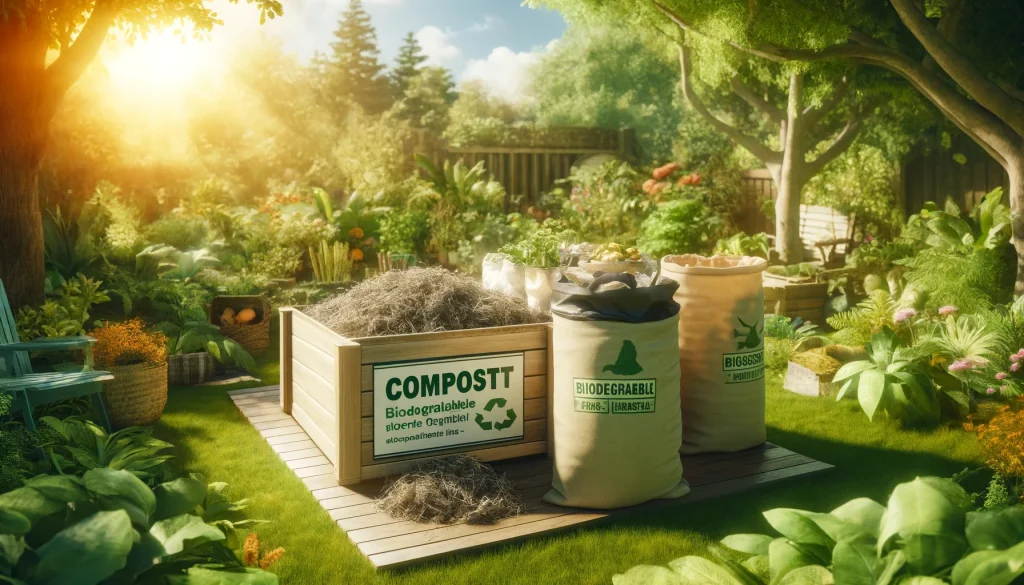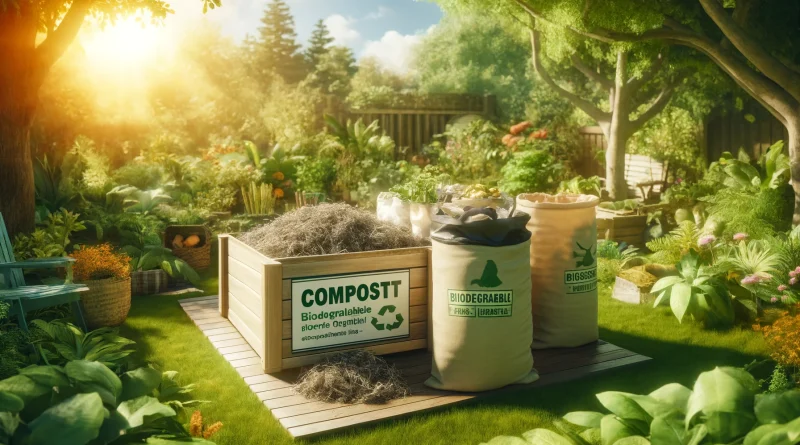How to Dispose of Biodegradable Bags Properly
Disposing of biodegradable bags properly is essential for ensuring they have the least possible negative impact on the environment. These eco-friendly alternatives to traditional plastic bags are designed to break down more quickly and safely. But, if not disposed of correctly, their benefits can be significantly reduced. In this article, we’ll delve into the details of how to properly dispose of biodegradable bags, ensuring that you’re contributing positively to the environment.
How to Dispose of Biodegradable Bags Properly

Understanding Biodegradable Bags
What Are Biodegradable Bags?
Biodegradable bags are made from materials that can decompose naturally by the action of microorganisms, such as bacteria and fungi. Unlike traditional plastic bags, which can take hundreds of years to break down, biodegradable bags are designed to degrade much faster, reducing their environmental impact.
Types of Biodegradable Bags
Compostable Bags
Compostable bags are a type of biodegradable bag that breaks down in composting conditions. These bags are typically made from plant-based materials like cornstarch and are designed to turn into nutrient-rich compost when exposed to the right conditions.
Oxo-Biodegradable Bags
Oxo-biodegradable bags contain additives that help them degrade more quickly when exposed to oxygen, light, and heat. However, these bags may still leave behind small plastic fragments, making them less environmentally friendly than compostable bags.
Biodegradable Dog Poop Bags
If you’re a pet owner, you’re likely familiar with the challenge of dealing with dog waste. Biodegradable dog poop bags offer an eco-friendly solution to this everyday issue. These bags are designed to break down more quickly than traditional plastic bags, minimizing their environmental impact. Made from plant-based materials, they decompose naturally in composting conditions, turning into nutrient-rich compost instead of lingering in landfills for centuries.
Benefits of Using Biodegradable Bags
Biodegradable bags offer several advantages over traditional plastic bags. They reduce reliance on fossil fuels, lower carbon footprints, and, when properly disposed of, minimize the long-term environmental impact of plastic waste.
Environmental Impact of Biodegradable Bags
Positive Environmental Effects
When disposed of correctly, biodegradable bags can significantly reduce the amount of plastic waste in landfills and oceans. They decompose faster, reducing the risk of harm to wildlife and ecosystems.
Potential Drawbacks
However, if biodegradable bags are not disposed of correctly, they can end up in landfills where the conditions may not be right for decomposition. This can lead to methane emissions, a potent greenhouse gas.
Proper Disposal Methods
Home Composting
Setting Up a Compost Bin
Home composting is an excellent way to dispose of compostable bags. Start by setting up a compost bin in your backyard or using a compost tumbler. Ensure the bin is well-ventilated and can retain moisture.
Suitable Conditions for Composting
For composting to be effective, you need the right balance of green (nitrogen-rich) and brown (carbon-rich) materials. Compostable bags should be shredded and mixed with other compostable waste to aid decomposition.
Industrial Composting
Finding Local Composting Facilities
Industrial composting facilities are equipped to handle compostable bags more efficiently than home composting setups. Check with your local waste management services to find a facility near you.
Differences Between Home and Industrial Composting
Industrial composting facilities operate at higher temperatures and with better-controlled conditions, ensuring faster and more complete decomposition of compostable bags.
Common Misconceptions
Biodegradable vs. Compostable
Many people use the terms “biodegradable” and “compostable” interchangeably, but they are not the same. Compostable items break down into non-toxic, nutrient-rich compost, while biodegradable items simply break down into smaller pieces, which may still be harmful.
Misleading Labels and Claims
Some products labeled as biodegradable may not decompose as expected, especially if they end up in landfills. Always look for certified compostable bags for the best environmental outcome.
Step-by-Step Guide to Disposing of Biodegradable Bags
Checking Bag Labels
Ensure that the bags are labeled as compostable and meet certification standards, such as those from the Biodegradable Products Institute (BPI).
Preparing Bags for Disposal
Shred or cut the bags into smaller pieces to speed up the composting process. Remove any non-compostable materials from the bags.
Home Composting Process
Add the shredded bags to your compost bin, ensuring a good mix with other compostable materials. Turn the compost regularly to maintain aeration.
Using Community Composting Programs
If home composting isn’t an option, many communities offer composting programs. These programs can ensure that your compostable bags are disposed of correctly.
Alternative Uses for Biodegradable Bags
Gardening Applications
Biodegradable bags can be used in gardening, such as lining plant pots or as mulch. They break down and add nutrients to the soil.
Crafting and DIY Projects
Get creative with biodegradable bags in crafting projects. They can be used for making decorations, bags, or other DIY projects that eventually compost.
The Role of Legislation and Policy
Current Laws and Regulations
Many regions have implemented laws to promote the use of biodegradable bags and proper disposal methods. Stay informed about local regulations to ensure compliance.
Future Trends and Expectations
As awareness of environmental issues grows, expect more stringent regulations and increased support for biodegradable and compostable products.
Conclusion
Proper disposal of biodegradable bags is crucial for maximizing their environmental benefits. By understanding the differences between biodegradable and compostable bags, using appropriate disposal methods, and staying informed about local regulations, you can make a positive impact on the environment. Start today by incorporating these practices into your daily routine.
FAQs
What are biodegradable bags made of?
Biodegradable bags are typically made from plant-based materials like cornstarch, or from petroleum-based materials with additives to enhance decomposition.
Can all biodegradable bags be composted at home?
Not all biodegradable bags are suitable for home composting. Look for bags labeled as compostable and certified by reputable organizations for best results.
How long do biodegradable bags take to break down?
The decomposition time for biodegradable bags varies. Compostable bags can break down in a few months under ideal conditions, while others may take longer.
Are biodegradable bags better than plastic bags?
Yes, biodegradable bags are generally better for the environment than traditional plastic bags because they break down faster and reduce long-term pollution.
Where can I find industrial composting facilities?
You can find industrial composting facilities through local waste management services, environmental organizations, or municipal websites.

